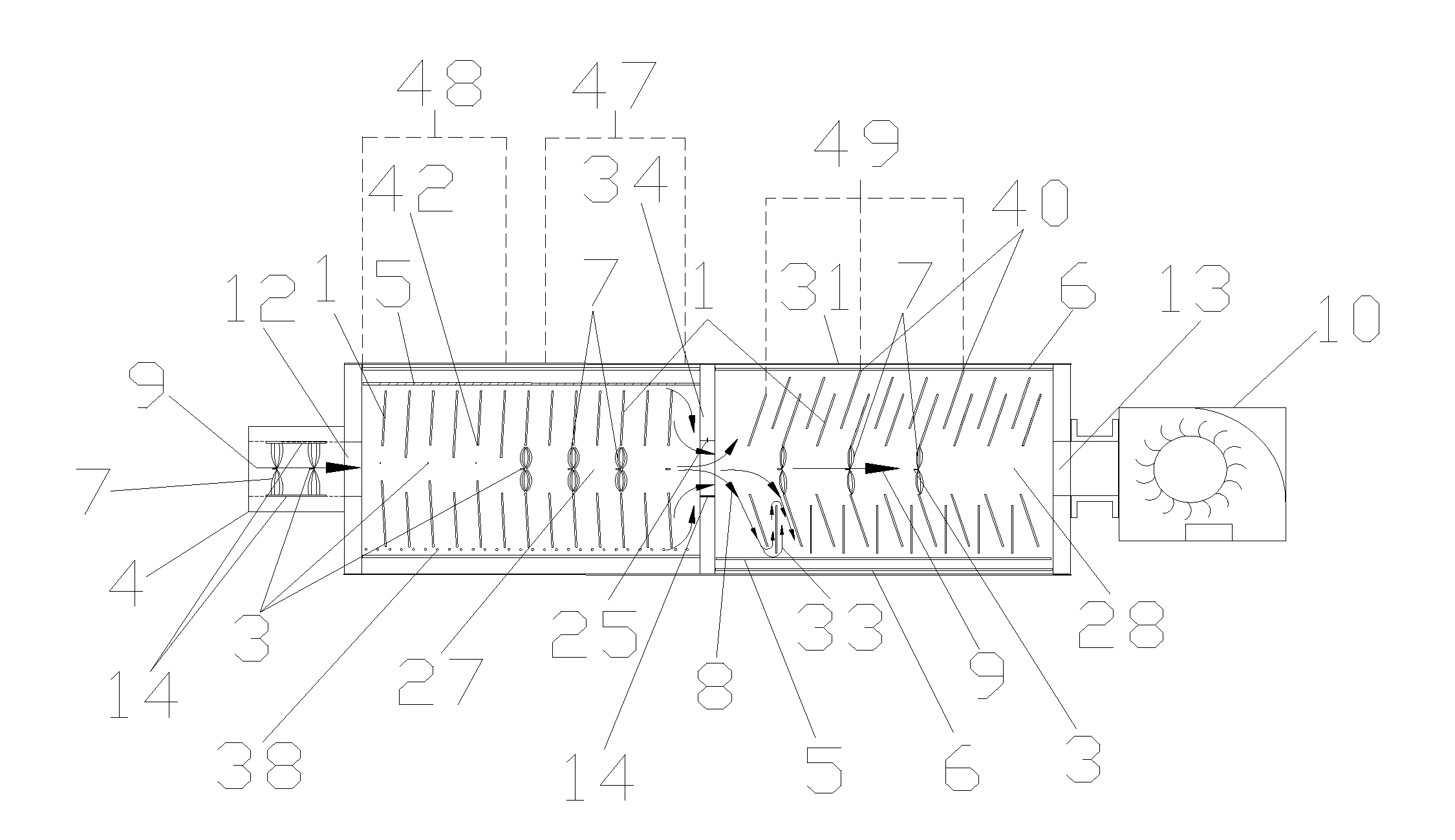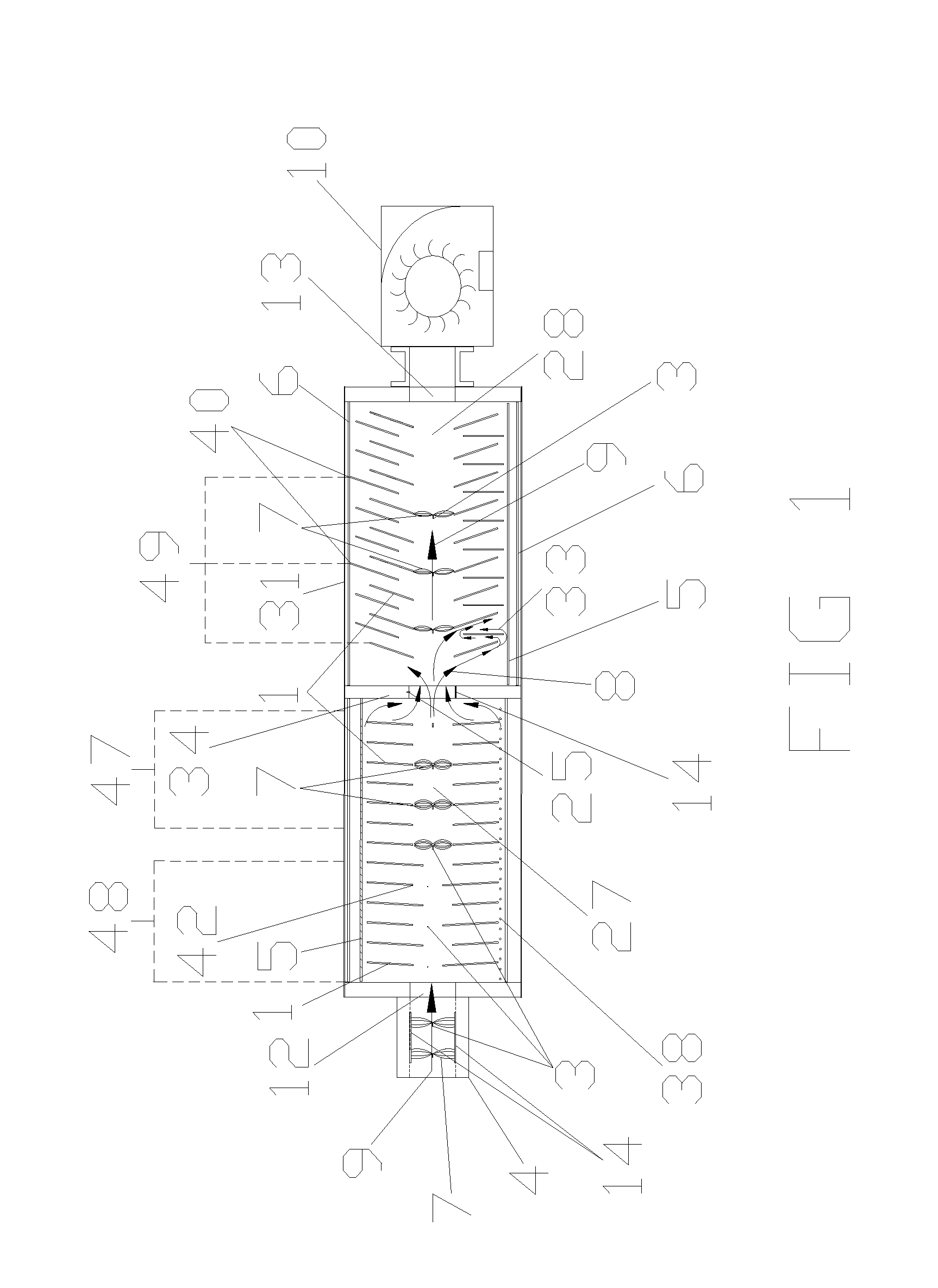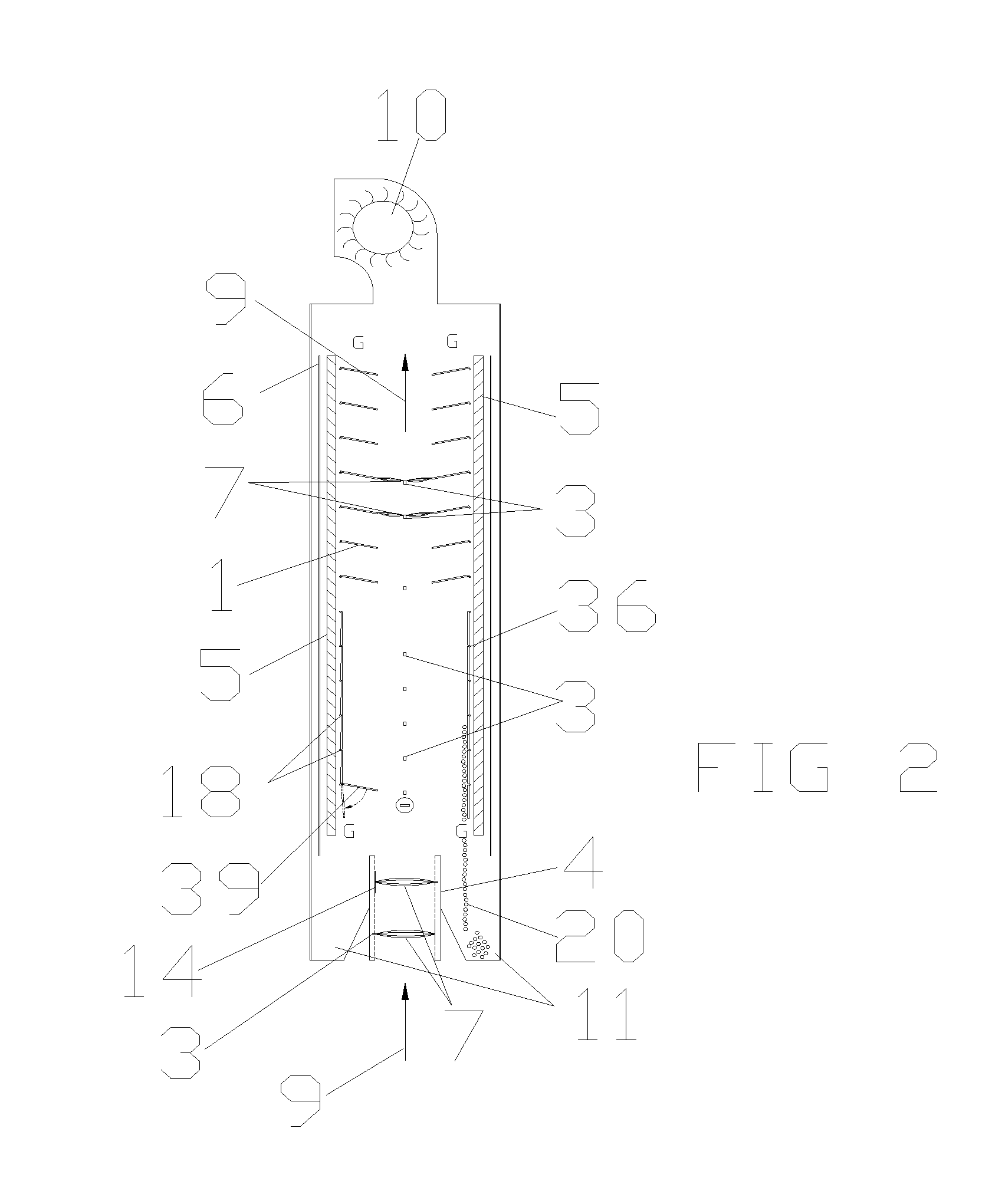Vane Electrostatic Precipitator
a precipitator and electrostatic technology, applied in the field of electrostatic precipitators, can solve the problems of poor conductive and high conductive particulates in the prior art of precipitators, and achieve the effect of efficient processing and efficient collection of particulates
- Summary
- Abstract
- Description
- Claims
- Application Information
AI Technical Summary
Benefits of technology
Problems solved by technology
Method used
Image
Examples
Embodiment Construction
[0068]The terms “vane”, “vane electrode”, “vane type electrode” and “vane type collecting electrode” are used interchangeably herein. A vane assembly, as described herein, is a group of vanes that are structurally assembled as one unit. The terms “input and output orifice” and “input and output aperture” are also used interchangeably herein.
[0069]The vane electrostatic precipitator technology described herein improves on the development of a “Grid Electrostatic Precipitator” (GEP). Patents related to the GEP technology include U.S. Pat. No. 6,773,489, U.S. Pat. No. 7,105,041 and U.S. Pat. No. 7,585,352, the disclosures of which are herein incorporated by reference.
[0070]Some applications for the VEP technology include, but are not limited to, collecting fly-ash and other particles from coal fired burners (both small and large coal fired furnaces), collecting hazardous waste, collecting glass and ceramic dust particles, collecting smelter dust particles, cement manufacturing (and oth...
PUM
 Login to View More
Login to View More Abstract
Description
Claims
Application Information
 Login to View More
Login to View More - R&D
- Intellectual Property
- Life Sciences
- Materials
- Tech Scout
- Unparalleled Data Quality
- Higher Quality Content
- 60% Fewer Hallucinations
Browse by: Latest US Patents, China's latest patents, Technical Efficacy Thesaurus, Application Domain, Technology Topic, Popular Technical Reports.
© 2025 PatSnap. All rights reserved.Legal|Privacy policy|Modern Slavery Act Transparency Statement|Sitemap|About US| Contact US: help@patsnap.com



